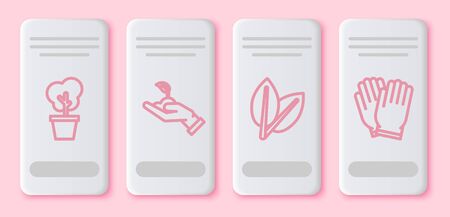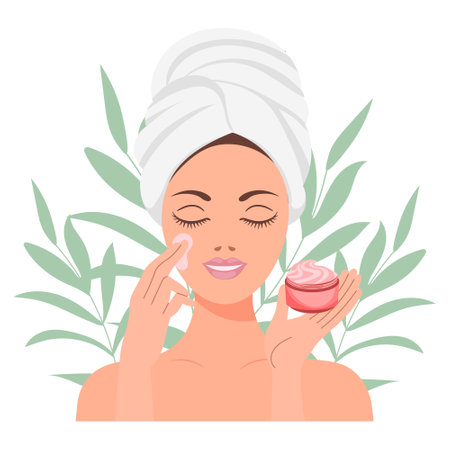1. Understand What Clean Beauty Really Means
If youre thinking about switching to a clean beauty cleanser but are worried about breakouts, the first step is understanding what “clean beauty” actually means in the U.S. skincare world. The term “clean” can be confusing because its not regulated by the FDA, which means brands often define it differently. However, in general, clean beauty refers to products made without ingredients that are known or suspected to be harmful to your health or the environment.
How Clean Beauty Differs from Natural and Organic
Its easy to confuse clean beauty with natural or organic skincare, but they arent the same thing. Heres a quick breakdown:
| Label | What It Means |
|---|---|
| Clean | Free from potentially harmful ingredients like parabens, sulfates, phthalates, and synthetic fragrances. Not necessarily 100% natural. |
| Natural | Made primarily from plant-based or mineral ingredients. May still include allergens or irritants if not carefully formulated. |
| Organic | Contains ingredients grown without pesticides or synthetic fertilizers. Must meet USDA certification standards to carry an official organic label. |
Common Ingredients Avoided in Clean Beauty Cleansers
When choosing a clean beauty cleanser, look for formulas that leave out these common ingredients:
- Parabens: Preservatives that may disrupt hormones.
- Sulfates (like SLS and SLES): Harsh detergents that can strip skin of natural oils.
- Phthalates: Chemicals often found in synthetic fragrances; linked to hormone disruption.
- Formaldehyde-releasing preservatives: Such as DMDM hydantoin; used to prevent bacteria growth but can cause irritation.
- Synthetic Fragrances: Can contain dozens of hidden chemicals that may irritate sensitive skin.
Tip:
Always check product labels and ingredient lists—just because a brand claims to be “clean” doesn’t mean all their products are free from questionable ingredients. Look for transparency and third-party certifications when possible.
The Takeaway for This Step:
Understanding what clean beauty really means will help you make smarter choices and reduce the risk of skin reactions when transitioning your cleanser. Knowledge is power—and in this case, it’s also your best defense against breakouts during the switch.
2. Identify Your Skin Type and Concerns
Before switching to a clean beauty cleanser, its super important to understand your skin type and any specific concerns you may have. Knowing this will help you avoid irritation or breakouts during the transition process and guide you in picking the right formula that works with—not against—your skin.
Why Knowing Your Skin Type Matters
Clean beauty cleansers often rely on plant-based or naturally derived ingredients, which can react differently depending on your skin type. For example, a cleanser loaded with essential oils might be great for dry skin but could cause flare-ups for acne-prone or sensitive skin. Taking time to figure out your skins needs helps you make smarter, safer choices.
How to Determine Your Skin Type at Home
You don’t need fancy tools to identify your skin type—just follow this simple method:
- Wash your face with a gentle cleanser and pat it dry.
- Wait about an hour without applying anything else to your skin.
- Observe how your skin feels and looks.
| Skin Type | Common Signs |
|---|---|
| Oily | Shiny all over, especially in the T-zone (forehead, nose, chin) |
| Dry | Tightness, flakiness, rough texture |
| Combination | Oily in T-zone but dry or normal elsewhere |
| Sensitive | Easily irritated, redness, stinging after using products |
| Normal | No major issues; balanced and smooth overall |
Tune Into Your Skin Concerns
Apart from skin type, think about what specific issues you want your cleanser to address. Here are some common ones:
- Acne-prone: Look for non-comedogenic formulas with gentle exfoliants like fruit enzymes or willow bark extract.
- Dullness: Try cleansers with brightening ingredients like vitamin C or papaya enzymes.
- Sensitivity: Go for fragrance-free options with calming ingredients like chamomile or aloe vera.
- Aging concerns: A hydrating cleanser with antioxidants can help support mature skin.
A Quick Tip:
If youre dealing with more than one concern (like sensitive + oily), look for multitasking formulas labeled as “balancing” or “gentle yet clarifying.”
The Bottom Line?
The better you know your skin, the smoother your clean beauty journey will be. Taking time to assess your unique needs puts you in control—and helps prevent unwanted breakouts during the switch.

3. Ease Into the Switch Gradually
Switching to a clean beauty cleanser sounds exciting, but your skin might not be as thrilled if you rush the process. One of the most important things you can do is transition slowly—this gives your skin time to adjust and helps prevent breakouts or irritation.
Why You Should Go Slow
Clean beauty cleansers often have fewer synthetic ingredients, which is great for long-term skin health. But if your skin is used to conventional products, removing those chemicals all at once can cause temporary imbalances. That’s why easing into the change one product at a time can make a big difference.
Step-by-Step Approach
Here’s a simple way to introduce a clean cleanser into your routine:
| Week | What to Do | Why It Helps |
|---|---|---|
| Week 1 | Use your clean cleanser every other night | This lets your skin get used to new ingredients slowly |
| Week 2 | Use the clean cleanser daily at night | Your skin starts adapting without feeling overwhelmed |
| Week 3+ | If no irritation, use morning and night as needed | You’ve built tolerance and can now enjoy full benefits |
Tune In to Your Skin’s Signals
No two people react exactly the same way to skincare changes. During this transition, pay close attention to how your skin feels and looks. If you notice redness, dryness, or breakouts that don’t improve within a few days, it might be a sign that your skin needs more time—or that the product isn’t right for you.
A Few Tips to Make It Easier:
- Patch test first: Always try the product on a small area like your jawline before using it all over.
- Avoid mixing too many new products: Stick with one change at a time so you know what’s working (or not).
- K.I.S.S.—Keep It Super Simple: The simpler your routine during this period, the easier it is for your skin to adapt.
A gradual switch gives your skin room to breathe and adapt naturally. Think of it like changing your diet—you wouldn’t go from fast food to raw veggies overnight! A little patience goes a long way in achieving clear, healthy-looking skin with clean beauty.
4. Read Ingredient Labels Like a Pro
Making the switch to a clean beauty cleanser is exciting, but reading ingredient labels can feel like decoding a secret language. If youre trying to avoid breakouts during the transition, learning how to read these labels is key. Heres how you can become an ingredient-savvy shopper and choose a clean cleanser that’s gentle on your skin.
Why Ingredient Knowledge Matters
Just because a product is labeled “clean” doesnt mean its right for your skin. In the U.S., theres no strict regulation on what counts as “clean beauty,” so ingredients can vary a lot from brand to brand. Understanding what’s in your product helps you avoid common irritants and breakout triggers.
Common Ingredients to Watch Out For
Some ingredients, even in clean beauty products, can trigger breakouts—especially if you have sensitive or acne-prone skin. Here are some common culprits:
| Ingredient | Why It Can Be Problematic |
|---|---|
| Essential Oils (e.g., lavender, tea tree) | Can be irritating or clogging for sensitive or acne-prone skin |
| Fragrance (even natural) | Often causes allergic reactions or inflammation |
| Coconut Oil | Highly comedogenic; may clog pores for some people |
| Alcohol (denatured, SD alcohol) | Dries out skin and disrupts the moisture barrier |
Tips for Reading Clean Beauty Labels
1. Scan the First Five Ingredients
The first few ingredients make up most of the product. If potential irritants are listed early, it might be best to skip it.
2. Look for Non-Comedogenic Claims
This term means the product is formulated not to clog pores. While not a guarantee, it’s a good starting point when choosing a new cleanser.
3. Use Ingredient Checker Tools
Websites and apps like INCI Decoder or EWG’s Skin Deep Database can help you break down whats in your product and flag any red flags.
4. Know Your Skin Type
If you have oily or acne-prone skin, stick with lightweight formulas and avoid rich oils or heavy emollients that might congest pores.
Your Go-To Ingredient Cheat Sheet
| Avoid If Youre Acne-Prone | Gentle Alternatives to Look For |
|---|---|
| Fragrance/Parfum | No added fragrance or labeled “fragrance-free” |
| Coconut Oil | Squalane, Jojoba Oil (non-comedogenic) |
| Denatured Alcohol | Aloe Vera Juice, Glycerin |
| Lavender/Tee Tree Oil (in high concentrations) | Chamomile Extract, Calendula |
The more familiar you get with ingredient lists, the easier it becomes to find clean beauty cleansers that work for your unique skin needs—without the unwanted breakouts.
5. Build a Supportive Routine Around Your Cleanser
Switching to a clean beauty cleanser is a great first step, but to truly prevent breakouts and keep your skin happy, it’s important to support that change with a full routine of clean skincare habits. Think of your cleanser as the foundation—now let’s build around it.
Why Supporting Products Matter
Your new clean cleanser may be gentler on the skin, but if the rest of your routine contains harsh or clogging ingredients, you might still experience irritation or breakouts. Pairing your cleanser with other clean products helps create balance and consistency for your skin.
Key Steps to Include in Your Routine
Here’s a simple breakdown of a supportive skincare routine using clean beauty principles:
| Step | Product Type | What to Look For |
|---|---|---|
| 1 | Cleanser | Sulfate-free, fragrance-free, non-comedogenic |
| 2 | Toner (optional) | Alcohol-free, calming ingredients like rose water or chamomile |
| 3 | Serum | Hydrating (like hyaluronic acid) or calming (like niacinamide) |
| 4 | Moisturizer | Ceramide-rich, oil-free or lightweight plant-based oils |
| 5 | Sunscreen (AM only) | Mineral-based (zinc oxide or titanium dioxide), SPF 30+ |
The Importance of Moisturizing and Sun Protection
A common mistake when transitioning to clean skincare is skipping moisturizer out of fear of breakouts. But hydrated skin actually heals faster and stays balanced. Look for moisturizers with simple ingredient lists and avoid heavy synthetic fragrances.
Sunscreen is also crucial—even if youre indoors most of the day. Clean mineral sunscreens protect your skin from UV damage without the pore-clogging chemicals found in some conventional brands.
Pro Tip:
If you’re unsure whether a product is truly “clean,” look for third-party certifications like EWG Verified™, MADE SAFE®, or check the INCI list for known irritants.
Create Habits That Support Your Skin
Your skincare routine isn’t just about products—it’s also about habits. These small changes can make a big difference while your skin adjusts:
- Be consistent: Stick to your routine morning and night.
- Avoid over-washing: Cleansing twice daily is enough.
- Use lukewarm water: Hot water can strip natural oils.
- Change pillowcases regularly: To avoid bacteria buildup.
- Avoid touching your face: This helps minimize breakouts.
A well-rounded, clean skincare routine will help your new cleanser shine—and more importantly, it’ll help your skin stay healthy and breakout-free as it adjusts to cleaner ingredients.


